You can find links to full versions of papers that only have abstracts in the procedings here
| 19 | Yifeng Li, Chih-Yu Chen and Wyeth Wasserman. Deep Feature Selection: Theory and Application to Identify Enhancers and Promoters |
| 30 | Jong Wha Joo, Eun Yong Kang, Elin Org, Nick Furlotte, Brian Parks, Aldons Lusis and Eleazar Eskin. Efficient and accurate multiple-phenotype regression method for high dimensional data considering population structure |
| 31 | Sumudu Leelananda, Robert Jernigan and Andrzej Kloczkowski. Exploration of Designability of Proteins Using Graph Features of Contact Maps: Beyond Lattice Models |
| 36 | Laxmi Parida, Deniz Yorukoglu, Filippo Utro, Anna Paola Carrieri, Saugata Basu and David Kuhn. Topological Signatures for Population Admixture |
| 41 | Mark Hallen and Bruce Donald. COMETS (Constrained Optimization of Multistate Energies by Tree Search): A provable and efficient algorithm to optimize binding affinity and specificity with respect to sequence |
| 46 | Alex Bishara, Yuling Liu, Dorna Kashef-Haghighi, Ziming Weng, Daniel Newburger, Robert West, Arend Sidow and Serafim Batzoglou. Synthetic Long Reads Uncover Variation in Complex Regions of the Human Genome |
| 54 | Yichao Zhou, Yuexin Wu and Jianyang Zeng. Computational Protein Design Using AND/OR Branch-and-Bound Search |
| 55 | Roni Wilentzik and Irit Gat-Viks. A statistical framework for revealing signaling pathways perturbed by DNA variants |
| 57 | Maja Temerinac-Ott, Armaghan W. Naik and Robert F. Murphy. Deciding when to stop: Efficient experimentation to learn to predict drug-target interactions |
| 59 | Seunghak Lee, Aurelie Lozano, Prabhanjan Kambadur and Eric Xing. An Efficient Nonlinear Regression Approach for Genome-Wide Detection of Marginal and Interacting Genetic Variations |
| 63 | Leena Salmela, Kristoffer Sahlin, Veli Mäkinen and Alexandru Tomescu. Gap Filling as Exact Path Length Problem |
| 66 | Mingfu Shao and Bernard Moret. A Fast and Exact Algorithm for the Exemplar Breakpoint Distance |
| 73 | Fabio Vandin, Ben Raphael and Eli Upfal. On the Sample Complexity of Cancer Pathways Identification |
| 74 | Kai Dührkop and Sebastian Böcker. Fragmentation trees reloaded |
| 76 | Naama Amir, Dan Cohen and Haim J. Wolfson. DockStar: A novel ILP based integrative method for structural modelling of multimolecular protein complexes |
| 89 | Rasmus Fonseca, Henry van den Bedem and Julie Bernauer. KGSrna: Efficient 3D kinematics-based sampling for nucleic acids |
| 93 | Ilan Ben-Bassat and Benny Chor. CRISPR detection from very short reads using partial overlap graph |
| 95 | Emily Berger, Deniz Yorukoglu and Bonnie Berger. HapTree-X: An integrative Bayesian framework for haplotype reconstruction from transcriptome and genome sequencing data |
| 98 | Huichao Gong, Sai Zhang, Jiangdian Wang, Haipeng Gong and Jianyang Zeng. Constructing Structure Ensembles of Intrinsically Disordered Proteins from Chemical Shift Data |
| 113 | Arnon Mazza, Allon Wagner, Eytan Ruppin and Roded Sharan. Functional alignment of metabolic networks |
| 114 | Jonathan D Jou, Swati Jain, Ivelin Georgiev and Bruce R Donald. BWM*: A Novel, Provable, Ensemble-based Dynamic Programming Algorithm for Sparse Approximations of Computational Protein Design |
| 119 | Nam-Phuong Nguyen, Siavash Mirarab, Keerthana Kumar and Tandy Warnow. Ultra-large alignments using ensembles of Hidden Markov Models |
| 120 | Shou Yang, Shai Carmi and Itsik Pe'Er. Rapidly Registering Identity-by-Descent Across Ancestral Recombination Graphs |
| 126 | Stefano Bonissone and Pavel Pevzner. Immunoglobulin classification using the colored antibody graph |
| 129 | Srinivas Aluru, Alberto Apostolico and Sharma V. Thankachan. Efficient Alignment Free Sequence Comparison with Bounded Mismatches |
| 137 | Jianzhu Ma, Sheng Wang, Zhiyong Wang and Jinbo Xu. Protein Contact Prediction by Integrating Joint Evolutionary Coupling Analysis and Supervised Learning |
| 138 | Roy Ronen, Glenn Tesler, Noah A. Rosenberg and Vineet Bafna. Clade Fitness Proxy: Predicting Carriers of Ongoing Selective Sweeps Barring Knowledge of the Adaptive Allele |
| 146 | Stefan Canzar, Sandro Andreotti, David Weese, Knut Reinert and Gunnar W. Klau. CIDANE: Comprehensive isoform discovery and abundance estimation |
| 150 | Emre Sefer, Geet Duggal and Carl Kingsford. Deconvolution Of Ensemble Chromatin Interaction Data Reveals The Latent Mixing Structures In Cell Subpopulations |
| 156 | Mark Leiserson, Hsin-Ta Wu, Fabio Vandin and Benjamin Raphael. Comet: A Statistical Approach to Identify Combinations of Mutually Exclusive Alterations in Cancer |
| 160 | Hyunghoon Cho, Bonnie Berger and Jian Peng. Diffusion Component Analysis: Unraveling Functional Topology in Biological Networks |
| 161 | Igor Mandric and Alex Zelikovsky. ScaffMatch: Scaffolding Algorithm Based on Maximum Weight Matching |
| 166 | David Manescu and Uri Keich. A symmetric length-aware enrichment test |
| 167 | Surojit Biswas, Meredith McDonald, Jeffery Dangl and Vladimir Jojic. Learning microbial interaction networks from metagenomic count data |
| 170 | Andrew McPherson, Andrew Roth, Cedric Chauve and Cenk Sahinalp. Joint inference of genome structure and content in heterogeneous tumor samples |
| 173 | Philippe Gambette, Andreas Gunawan, Anthony Labarre, Stephane Vialette and Louxin Zhang. Locating a Tree in A Phylogenetic Network in Quadratic Time |



